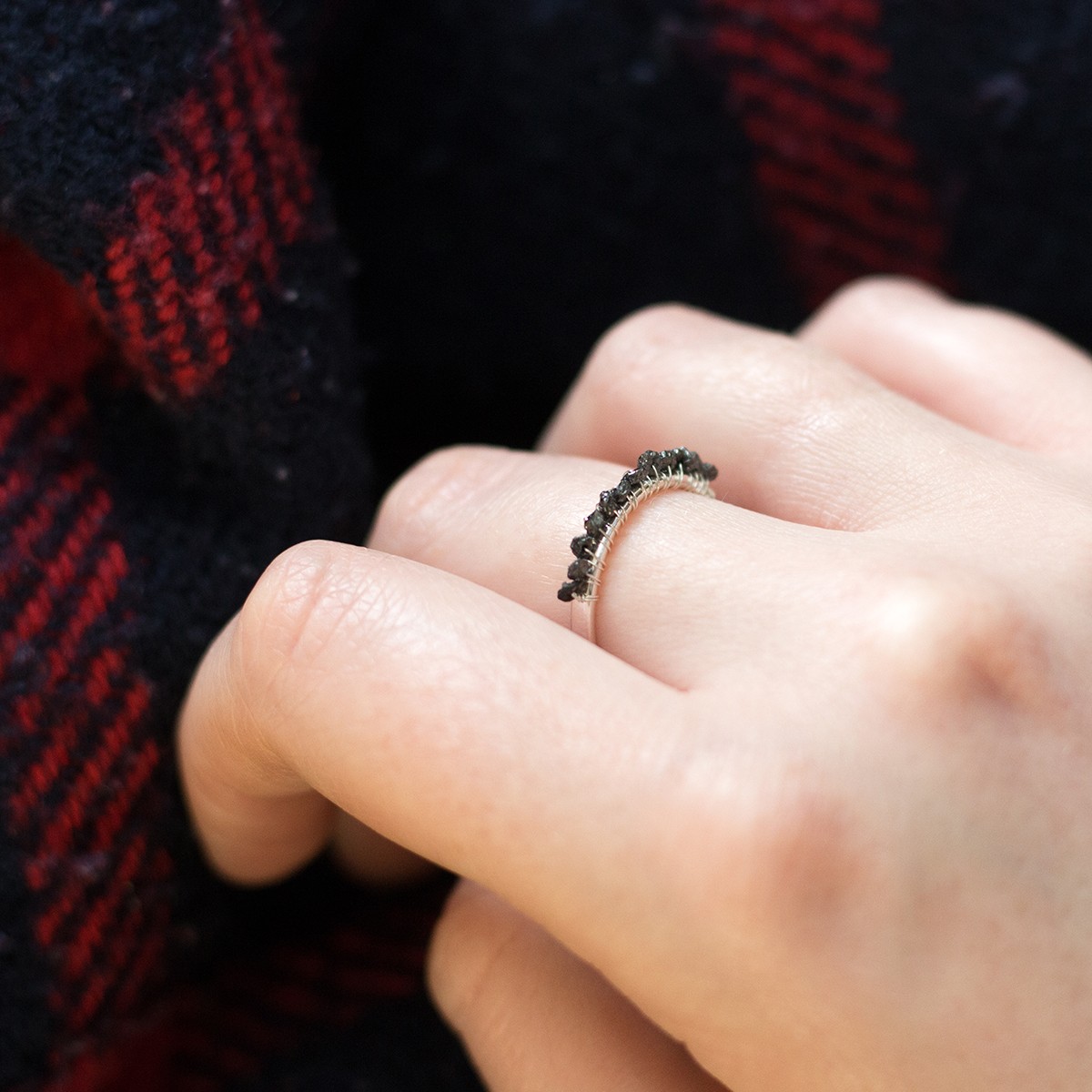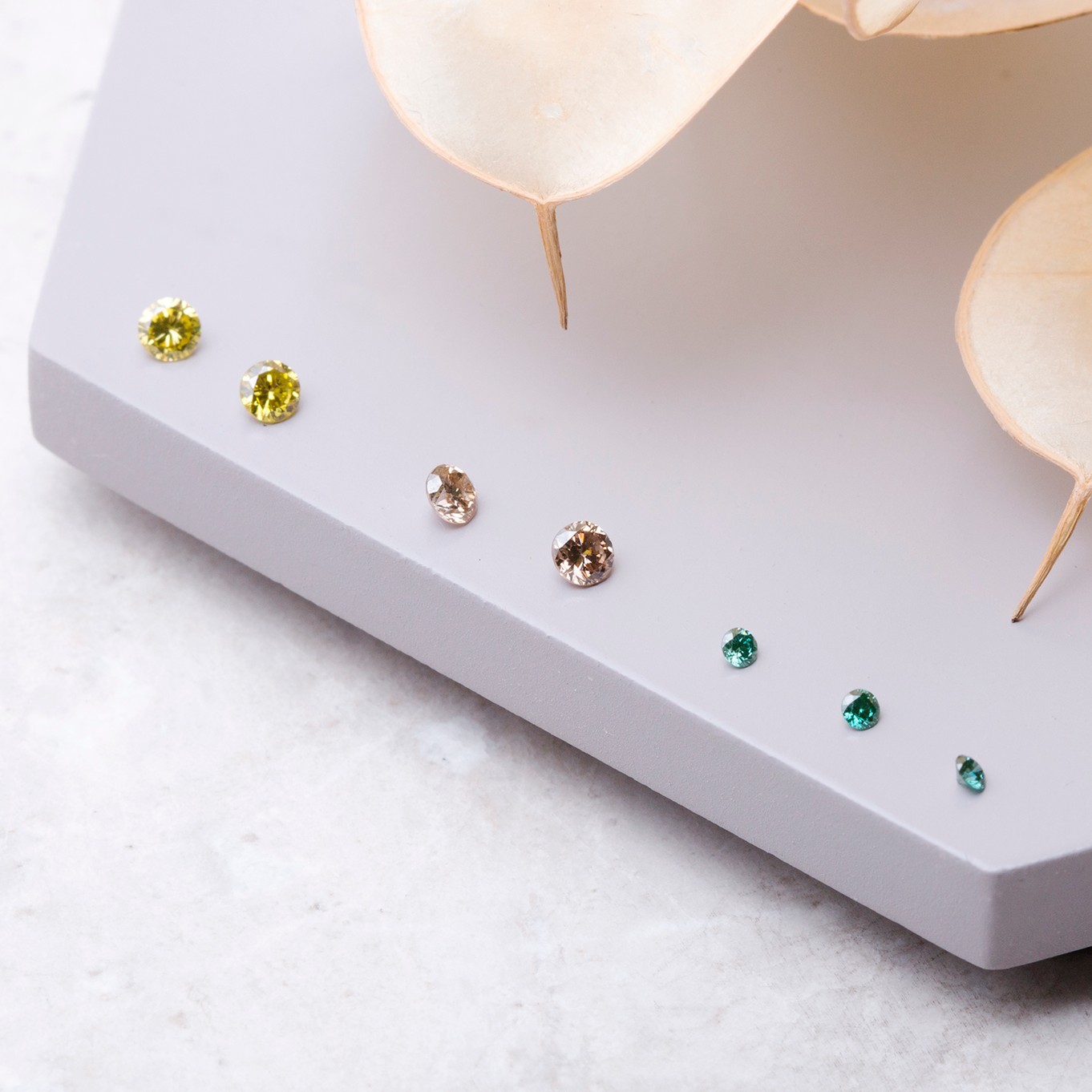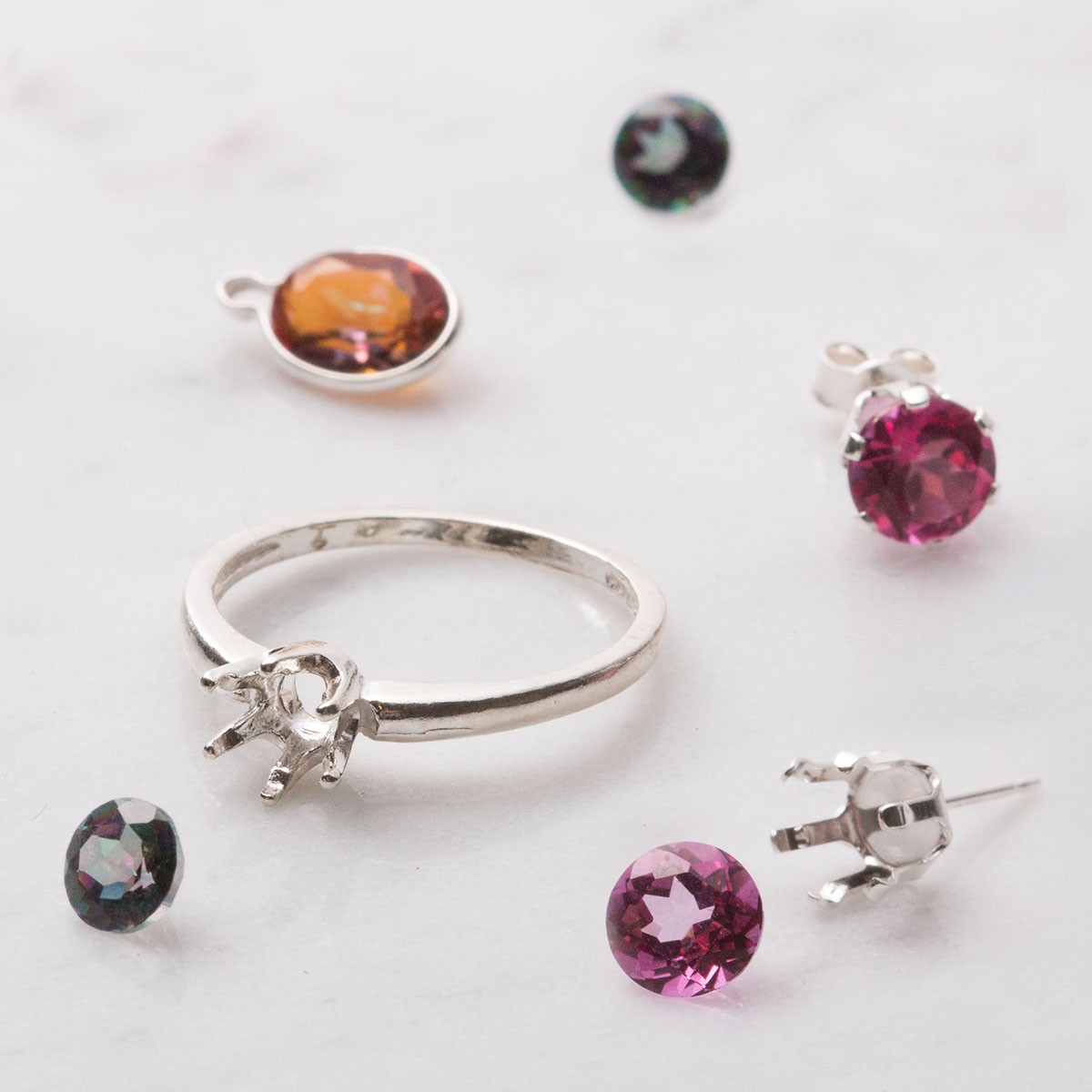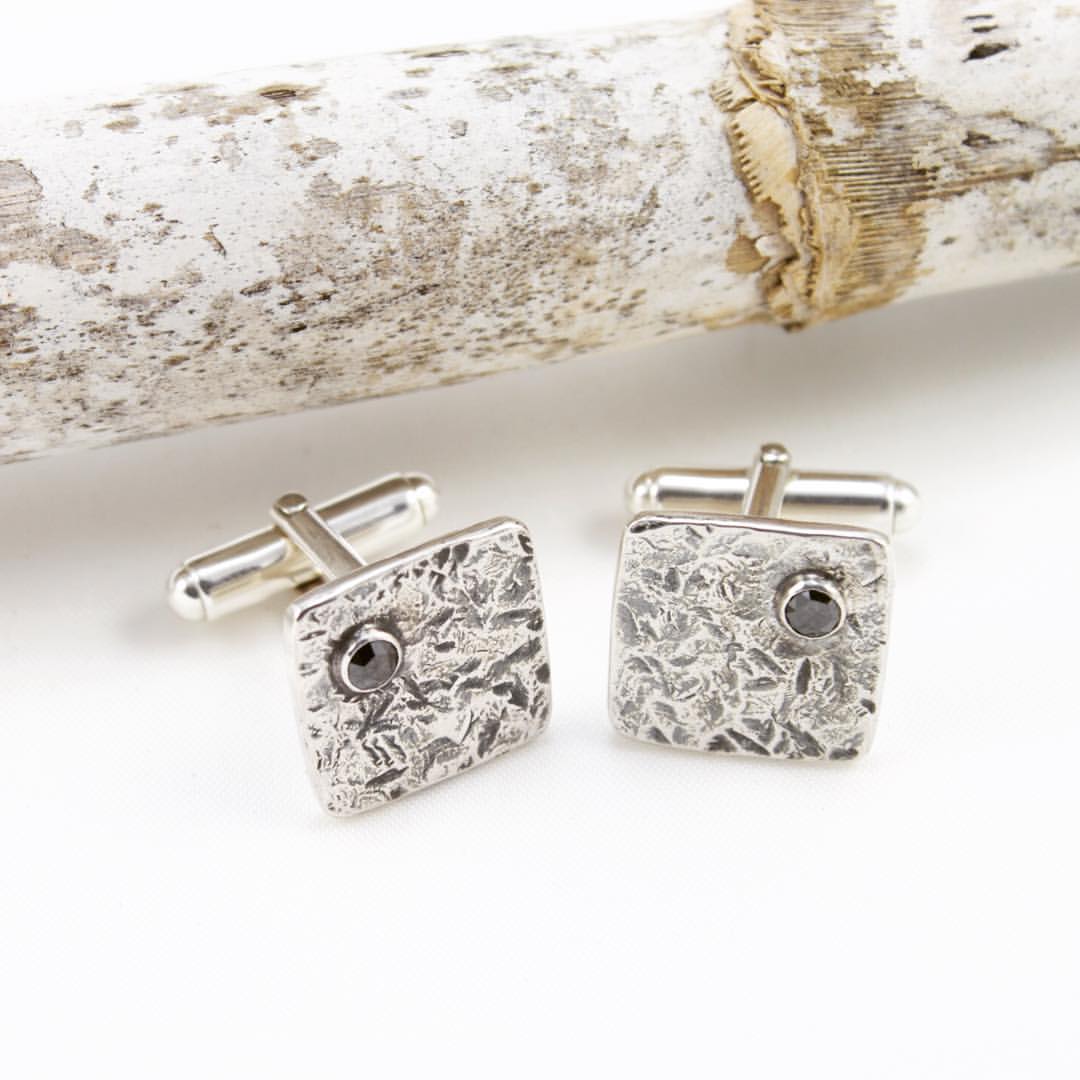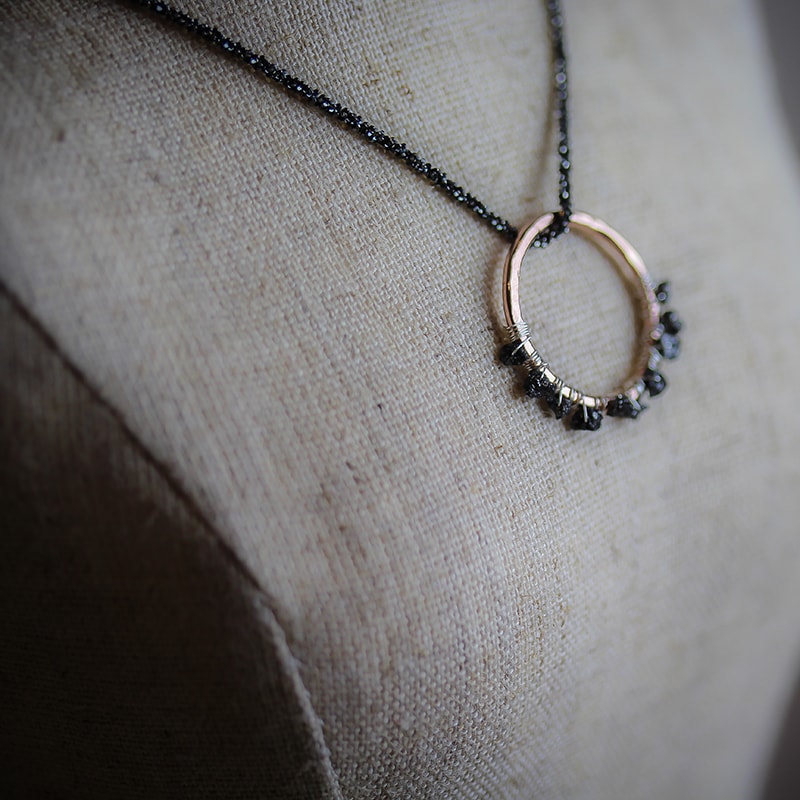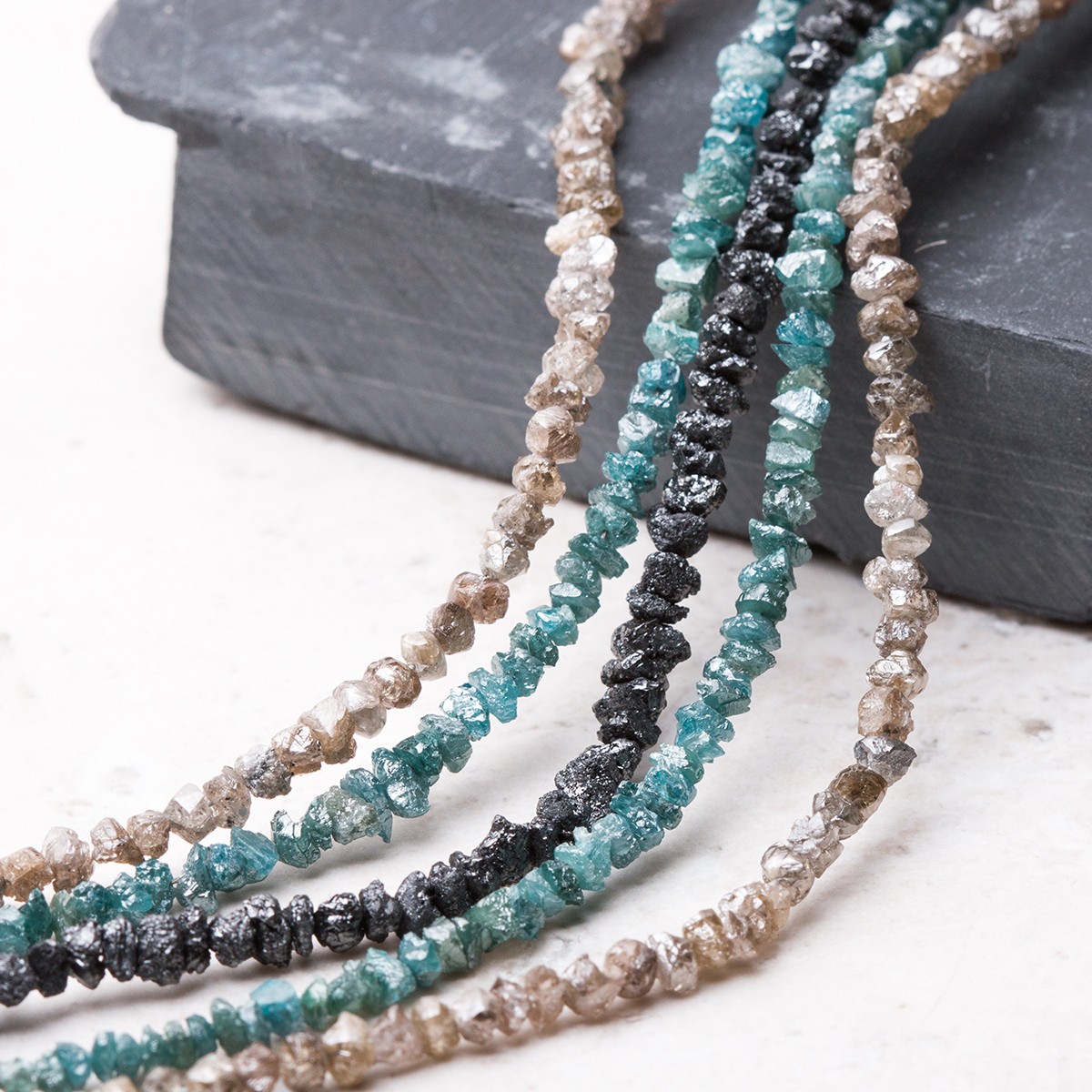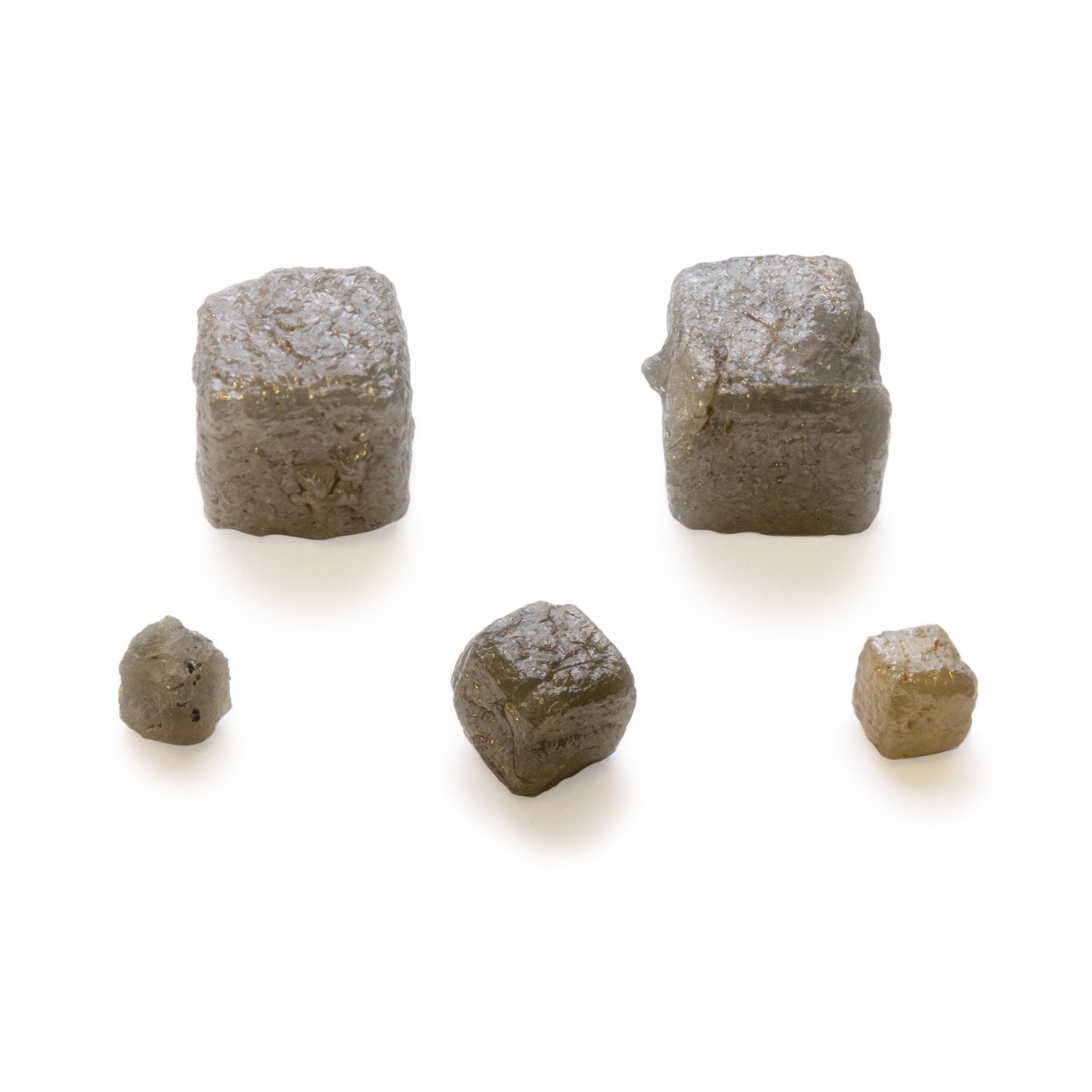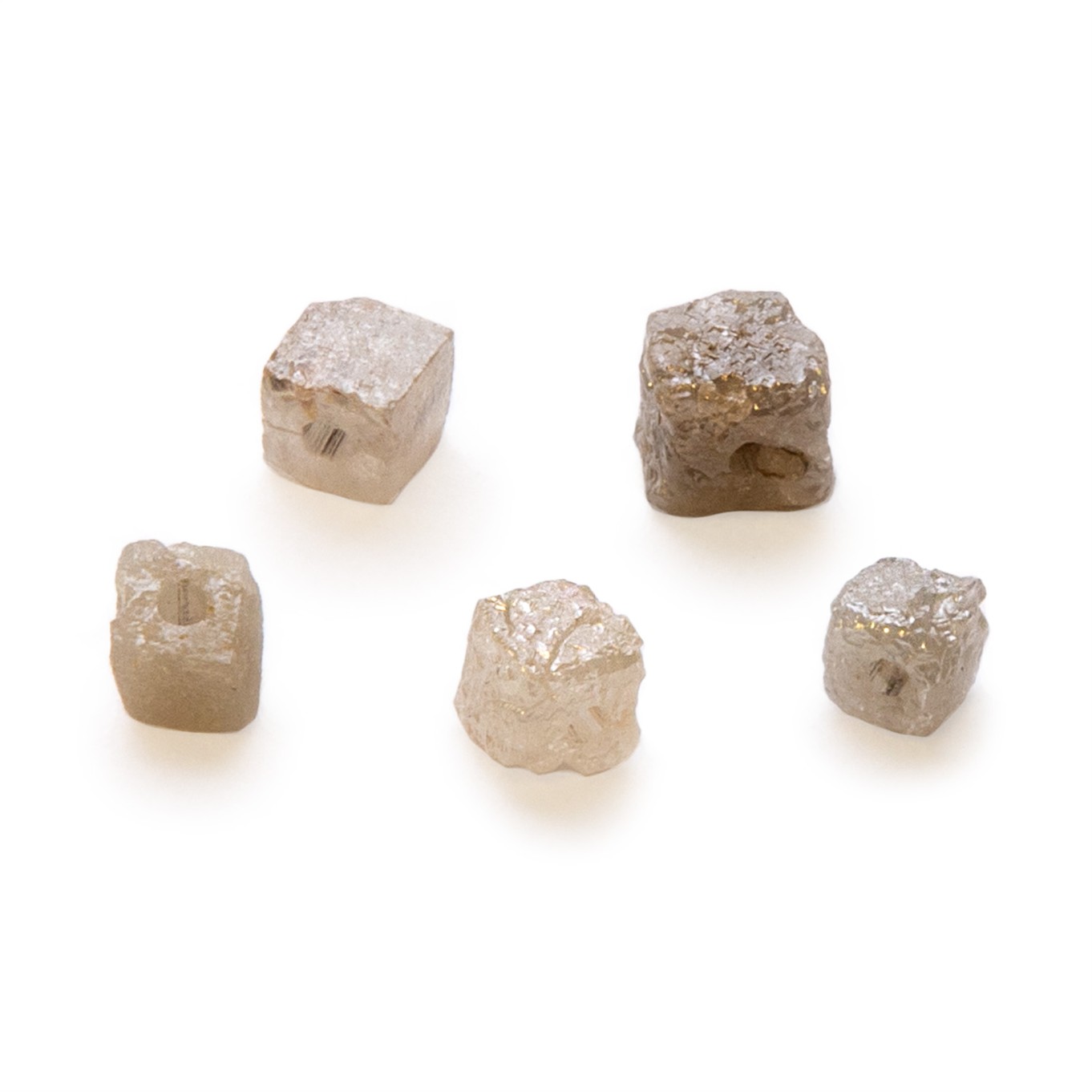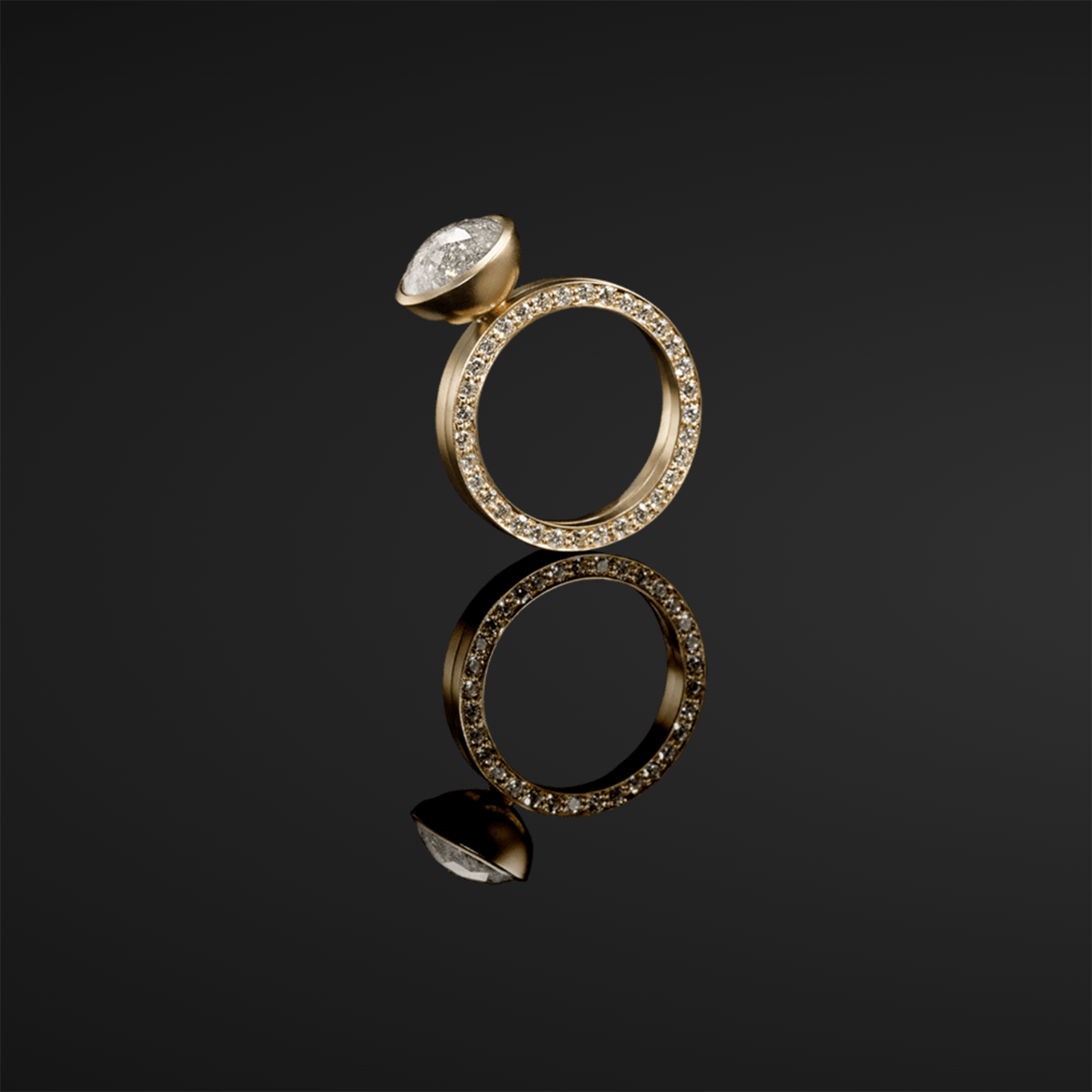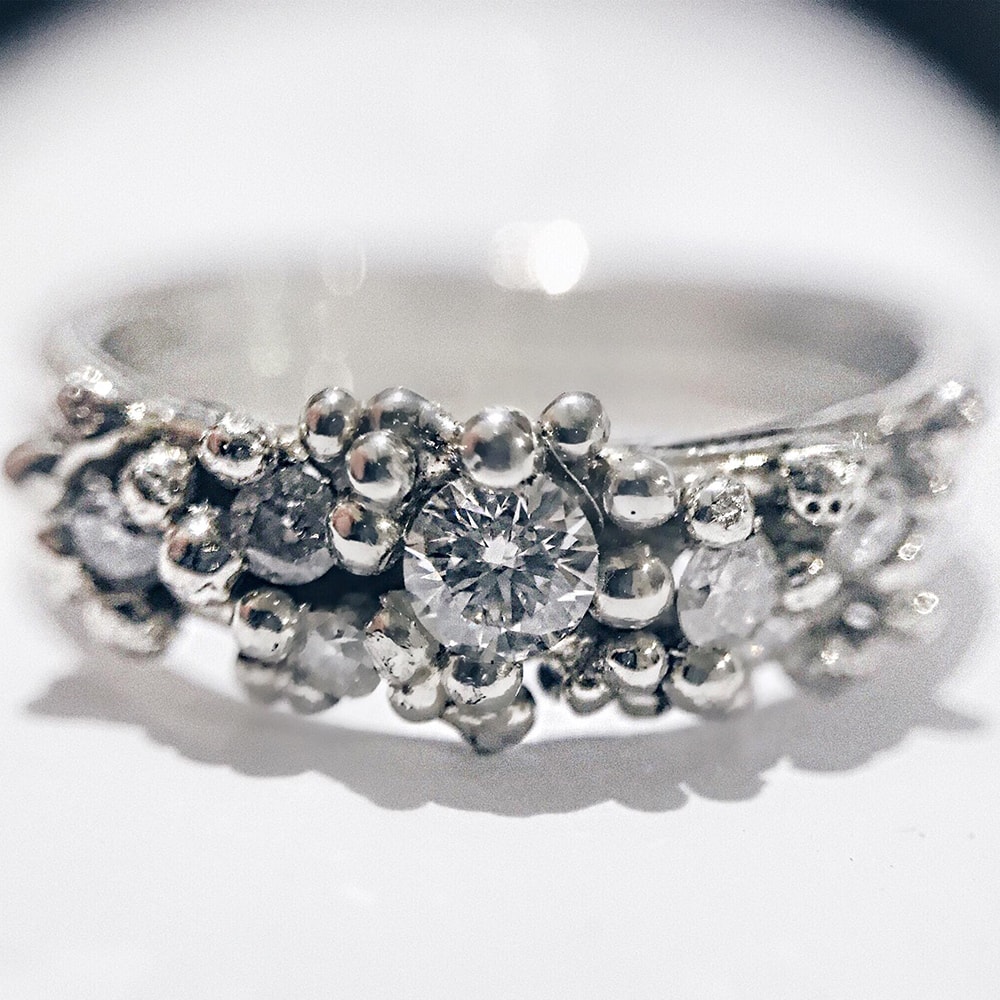Diamond: The April Birthstone
April comes with warmer weather and longer days (just watch out for those April showers!) but possibly the best thing about this month is that we get to make jewellery featuring diamonds! Why? Because Diamond is the birthstone of April (you lucky April babies).
Diamonds are one of the most desirable gemstones in the world and have been the object of obsessions for many years. Some come with a very large price tag but our buying team has sourced a collection of beautiful sparkles that won't break the bank. You'll find a range of diamonds to use in your handmade jewellery designs including cabochons, beads and crystals.
We understand that working with diamonds can be pretty daunting, but don't worry - we're here to show you some diamond designs to spark your creativity.
Diamond Facts
Colour: Diamonds are most commonly colourless but in recent years colours are becoming more popular. Other colours include different shades of yellow, brown, green, blue, reds, pinks, greys and black. Nitrogen can create yellow, brown, green and black diamonds and minute boron traces give the blue hues.
Appearance: Diamonds are generally a clear stone but flaws and inclusions do occur as little thread lines or speckles within the gemstones. The clearer the stone the more expensive the stone will be.
Rarity: Made from carbon this stone is a commonly used stone it is not considered a rare gemstone. However it is intensively mined due to its popularity and so deposits of this mineral are gradually decreasing. Truly colourless diamonds are the rarest form due to them being free of any impurities which can taint the colour.
MOH Scale Hardness: This is the hardest mineral on earth measuring 10 on the Moh's scale. A diamond is a precious stone (as opposed to a semi-precious stone) due to its hardness.
Sources: Africa, Australia, Brazil, India, Russia, United States.
Diamond Formation, Mining, Cutting & Grading
Diamonds have been one of, if not the most popular of the gemstones for hundreds of years. A diamond is formed from carbon (graphite) which crystallises under immense pressure and high temperatures. They are most likely to be found up to 50 miles underground. It is not sensitive to chemicals and because of the strong uniform bonding in its particles, it is extremely strong.
The earliest diamonds were found in India in 4th century BC, but the youngest of these deposits were formed 900 million years ago!
The word diamond comes from the Greek word "Adamas" which means "unconquerable" referring to its strength.
Diamonds are most commonly mined in Africa, Australia, Brazil, India, Russia and United States. There has been a lot of controversy around the mining of diamonds due to many working conditions being unsafe.
Because of this around 80% of the diamond trade and production is now managed and controlled by "The Diamond Producers Association" and the "Central Selling Organisation". These organisations have divisions in place to assess the stones and conditions in which they are mined. Here at Kernowcraft we are very careful where we buy our diamonds from so we can guarantee that they are conflict-free.
Only around 20% of all diamonds mined are used for jewellery. The majority are used in industry for various uses such as cutting, milling and grinding other materials. They are also used for scientific purposes to gauge the hardness of other materials.
Diamonds for jewellery making are cut and graded according to the four C's - Colour, Clarity, Cut and Carat weight.
Diamond cuts have been developed over the years to show the best qualities and reflect as much light as possible through the stone. The more facets the stone has the more it catches the light and sparkles. The most popular cut is the Brilliant Cut - this consists of 58 facets, 33 on the crown and 25 on the pavilion. Not all stones can be cut in this way due to inclusions or fault lines.
Diamond cutters will assess stones for many hours, testing them under microscopes to cut each diamond in the best way possible before making the decision on which style is most suited to its natural attributes and making the first cut. Take the cutter of the infamous Cullinan Diamond Collection - the biggest clear diamond ever to be found. The cutter was so nervous cutting the stone from its raw form that he fainted with the first cut! Click here to view our amazing replica range of the Cullinan Diamond Series.
Today the world’s diamond deposits are now slowly becoming depleted. Less than 20% of the diamonds that are mined are of gem quality of which less than 2% are considered “investment diamonds”. Typically, more than 250 tons of ore must be mined in order to produce a one-carat, gem-quality stone.
Learn more about Diamonds
Diamond Mythology, Healing & Spiritual Qualities
The diamond is a symbol of purity. The light that it generates is said to bond relationships and bring love and clarity into a partnership.
This amazing gemstone is said to be an amplifier of energy and is one of the few stones that does not require 're-charging'. It is also said to increase the energy of anything that it comes into contact with. However, when using this gemstone for energy and chakra reasons, care must be taken as a diamond can also increase negative energy. The "merciless" light of a diamond is said to pinpoint anything that is negative and requires transformation. This can be tackled with the fearlessness, invincibility and fortitude that diamond are also said to impart.
Many believe that diamonds can help to clear emotional and mental pain and bring about new beginnings. Diamonds are also thought to be able to help treat glaucoma, clear sight, treat allergies and balance the metabolism, as well as have added benefits for the brain. It is said that the larger the stone the better it is at blocking electromagnetic stresses.
Diamonds In Jewellery Design
The use of diamonds in jewellery was has been recorded as far back as 1477, when Archduke Maximilian of Austria proposed to Mary of Burgundy. Although engagement rings were common at this time, diamonds were a rarity and were reserved for royalty and the upper elite class for many, many years.
The use of diamonds in jewellery slowly grew as the trading connections between the far flung corners of the world became more common and usable.
In 1947 De Beers launched arguably the most successful marketing campaign in jewellery history "A Diamond Is Forever" - suggesting that a diamond was the only stone to present for a marriage proposal. This led to the popularity of the diamond engagement ring that we still see today. Jewellers then developed the diamond world by trying out new cuts and styles to make their rings different to others. They began showing the features of the gemstone off to their very best and giving us the many different styles of diamond that we know today.
Diamonds have been used in Royal Jewellery for many years, the most spectacular of these are in museums so you can see the amazing stones up close. They really do have to be seen to be appreciated, the skills that the cutters and setters had back hundreds of years ago really are impressive.
Diamonds are still one of the most popular gemstones used in jewellery design today. They are such a truly beautiful stone, it is easy to see why.
Take a look at a peek into our diamond collection and some designs to inspire you below.
Explore Kernowcraft's Diamonds & Be Inspired By Designs
Diamond Faceted Stones
One of the most popular cuts of diamonds is the faceted stone, we are proud to stock a range of sizes as well as beautiful colours to choose from. For a super easy make you could even set these in our ready made snaptite earring settings. To ensure a totally secure fit check the claws are holding the stone tight with a pusher before wearing.
Rose Cut Diamond Cabochons
Rose cut diamonds are a really nice way to start introducing diamonds to your designs. If you are used to working with semi precious cabochons and have mastered bezel setting you will be able set these in the same way as they have a flat back and are a much less daunting prospect than setting a traditionally cut faceted diamond stone. You can make the bezel yourself using bezel wire. Rose cut diamonds are available in other colours too and would look wonderful together as stacking rings!
Customer Design: Diamond Cufflinks
These unique cufflinks are made by jeweller Caroline Jones. Caroline set our rose cut black diamonds in these sterling silver textured cufflinks which have been oxidised and polished back to enhance the design.
Caroline left a great review of these diamonds saying, "I love the way they sparkle, but are understated. I was delighted with my purchase as they really made the cufflinks look special". They will certainly make for a very special gift.
Customer Design: Diamond Necklace
This gorgeous necklace was made by Caitlin Booth of jewellery brand When Caitie Met Soda. She has used our black diamond natural nugget beads to make this striking pendant. We love this design as it shows the versatility of the beads. TIP: The holes in these beads are very small so try using a fine wire such as 0.2mm sterling silver wire.
Diamond Natural Rough Nugget Beads
These beautiful natural diamond nugget beads are available in a range of subtle natural colours, one of the most popular is black, but we also have grey, champagne and green, click here to see the full selection.
Diamond Crystals
We have a selection of both drilled and undrilled natural diamond cube crystals, these could either be set in claw or bezel settings (which would make amazing rings) but the drilled version can also be strung as beads to make designs like those featured above.
Take a look at some of our undrilled and drilled diamond crystals below!
Discover more with Kernowcraft
Our popular feature 'Meet The Jeweller' is a chance to find out more about a jeweller's jewellery making journey, how they got started and their top tips and recommendations for other jewellers and jewellery making beginners. We also find out what their favourite Kernowcraft products are and why they choose us for their jewellery making supplies. Each jeweller has their own personal style and this creativity is something we want to celebrate.
References
- Gemstones, second edition - Cally Oldershaw, Christine Woodward, Roger Harding
- Gemstones - Cally Hall
- Gemstones Of The World - Walter Schumann
- The Crystal Bible - Judy Hall
- Website: www.brilliance.com
Also in this section:
- The Chakras & Stones For Beginners
- Top Gemstones For Love & Valentine's Day
- Rare Ammolite For Jewellery Making
- 5 Gemstones To Honour Your Mum
- 5 Gemstones To Wear On Your Travels
- Mohs Hardness Scale, Gemstone Durability & Jewellery Making
- Top 10 Affordable Gemstones For Jewellery Making
- Your Guide To Anniversary Gemstones & Jewellery Making
- Your Guide To Birthstones & Birthstone Jewellery
- Discover Rare Cornish Turquoise
- Garnet: The January Birthstone
- Amethyst: The February Birthstone
- Aquamarine: The March Birthstone
- Diamond: The April Birthstone
- Emerald: The May Birthstone
- Pearl: The June Birthstone
- Ruby: The July Birthstone
- Peridot: The August Birthstone
- Sapphire: The September Birthstone
- Opal: The October Birthstone
- Topaz: The November Birthstone
- Turquoise: The December Birthstone
- Types Of Diamonds For Jewellery Making
- Lapis Lazuli, The Stone For Truth & Communication
- Types Of Agate Stones For Jewellery Making
- What Are Precious & Semi-Precious Stones?
- Watermelon Tourmaline For Jewellery Making
- 6 Stones For Alternative Engagement Rings
- Rare Tanzanite For Jewellery Making
- Gemstones For Your Inner Mermaid
- 5 Spiritual Gemstones To Help Your Mind & Body
- Rose Quartz, The Love Stone
- What Are Drusy Gemstones?
- What Is A Boulder Opal & How Do We Source Them
- All About Our Natural Untreated Turquoise

